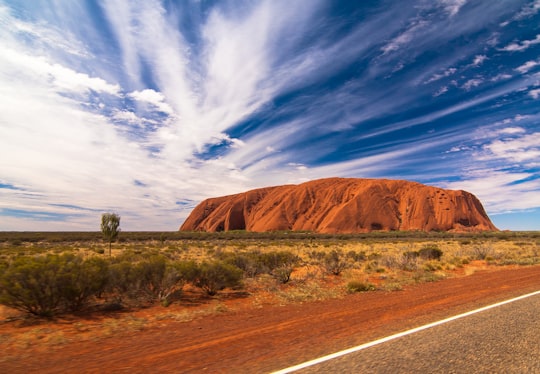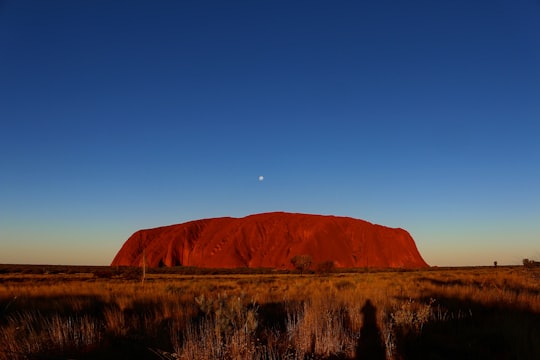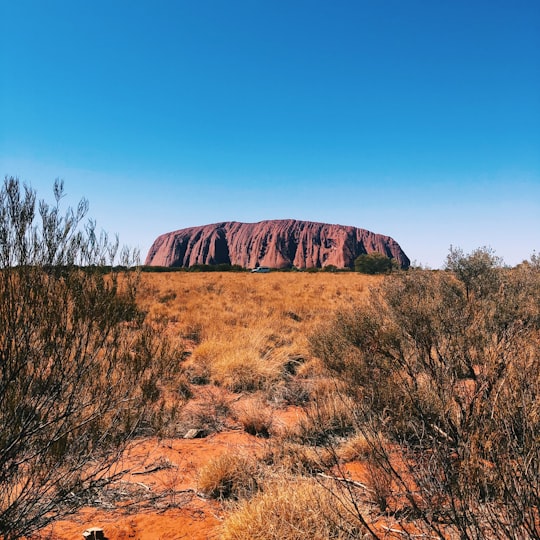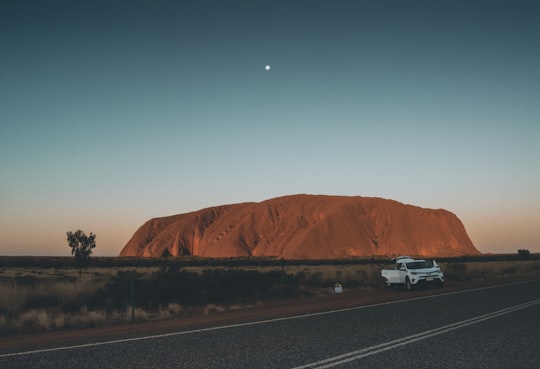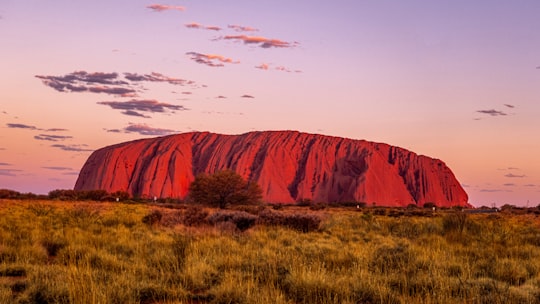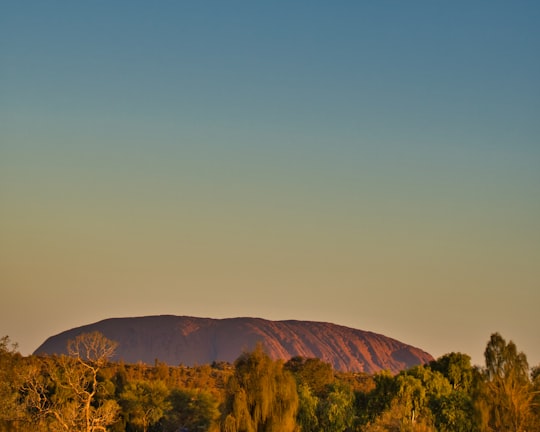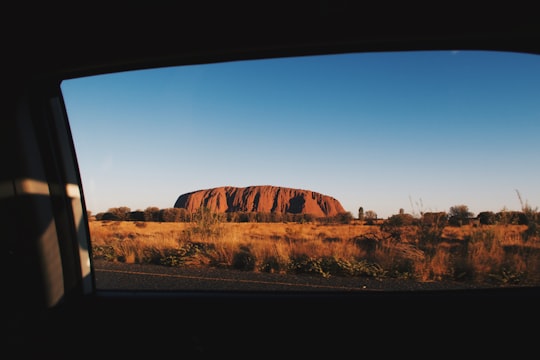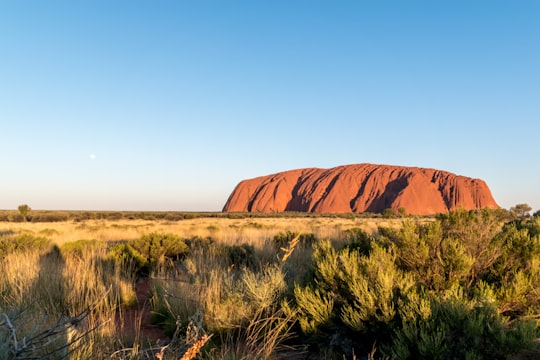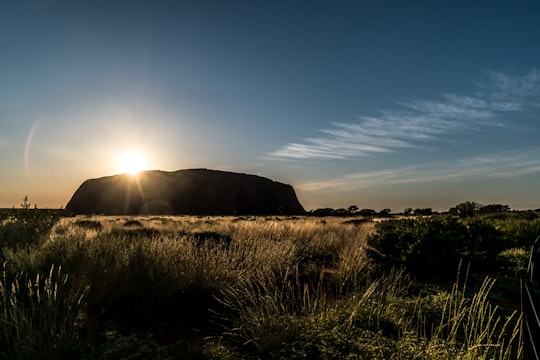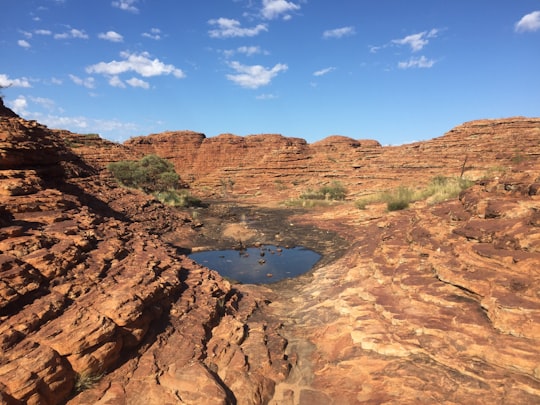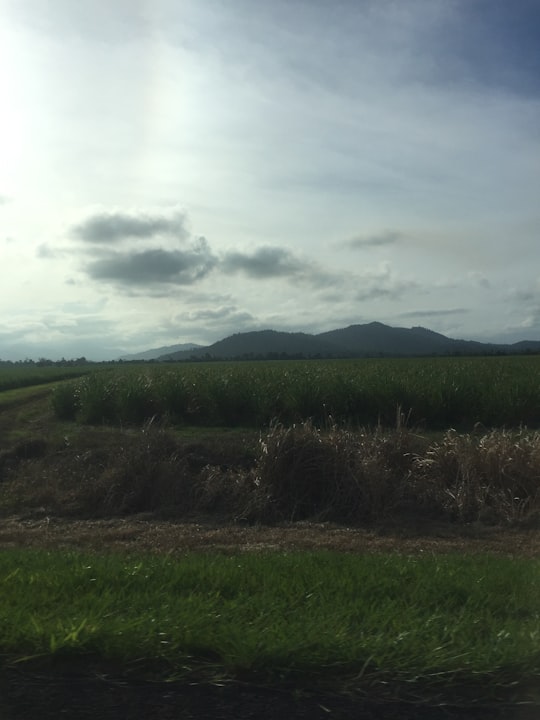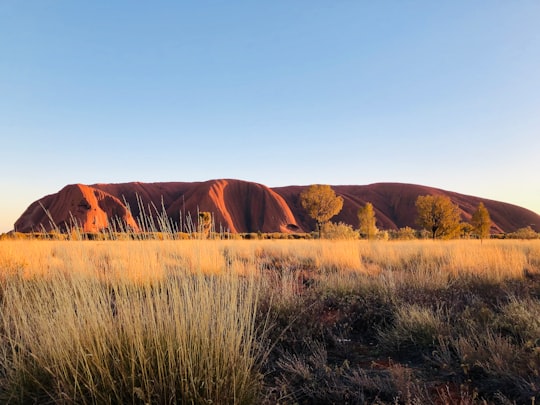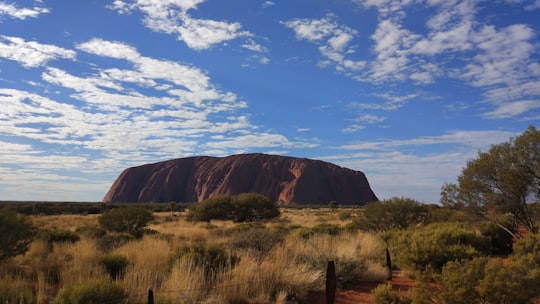Travel Guide of Uluru in Australia by Influencers and Travelers
Uluru, also known as Ayers Rock and officially gazetted as Uluru / Ayers Rock, is a large sandstone rock formation in the southern part of the Northern Territory in central Australia. It lies 335 km south west of the nearest large town, Alice Springs.
Download the Travel Map of Australia on Google Maps here
Pictures and Stories of Uluru from Influencers
13 pictures of Uluru from Photoholgic, Jason H, Kyle Hinkson and other travelers
Plan your trip in Uluru with AI 🤖 🗺
Roadtrips.ai is a AI powered trip planner that you can use to generate a customized trip itinerary for any destination in Australia in just one clickJust write your activities preferences, budget and number of days travelling and our artificial intelligence will do the rest for you
👉 Use the AI Trip Planner
How to visit Uluru ?
To get to Uluru, you can fly into Ayers Rock Airport (AYQ) from major Australian cities like Sydney, Melbourne, and Brisbane. From the airport, it's a 20-minute drive to the national park. Alternatively, you can embark on a road trip from Alice Springs, which is approximately a 4-5 hour drive.
Before your visit, it's essential to book your park entry tickets in advance. The Uluru-Kata Tjuta National Park pass is valid for 72 hours and can be purchased online. Also, consider booking a guided tour to learn about the cultural and historical significance of Uluru from experienced guides, especially if you're interested in the Aboriginal culture.
The costs of visiting Uluru can vary depending on your mode of transportation, accommodations, and activities planned. The park entry fee is AUD 25 for adults (16 years and older) and AUD 12.50 for children (5-15 years old). Guided tours can range from AUD 50 to over AUD 200, depending on the tour's length and inclusions.
Some of the best things to do at Uluru include the base walk, which is a 10.6 km trail that circles the entire rock. This walk allows you to experience the changing colors and textures of Uluru up close. Additionally, visiting the nearby Kata Tjuta, also known as The Olgas, is highly recommended. These striking rock formations offer various hiking trails and stunning views. Lastly, don't miss the Field of Light installation by artist Bruce Munro – a mesmerizing display of over 50,000 solar-powered lights that illuminate the desert landscape at night.
For dining options near Uluru, try the Ayers Wok Noodle Bar for delicious Asian cuisine or the Outback Pioneer BBQ for a traditional Australian barbecue experience. For a more upscale option, consider dining at the award-winning Sounds of Silence, which offers an unforgettable outdoor dining experience under the stars.
When it comes to accommodations, the Ayers Rock Resort offers a range of options to suit all budgets. The budget-friendly Outback Pioneer Hotel & Lodge is perfect for travelers looking for a more affordable option, while the luxurious Sails in the Desert Hotel provides a high-end experience with a beautiful pool and spa facilities.
Off the beaten path:
For an unusual and unforgettable experience, consider taking a scenic helicopter flight over Uluru and Kata Tjuta. This unique perspective allows you to fully appreciate the grandeur and beauty of these natural wonders from a bird's-eye view. Alternatively, you can embark on a camel tour and enjoy the breathtaking desert landscape while riding one of these gentle creatures. This offers a unique and authentic way to explore the area, as camels have been an essential part of the Australian outback's history.
Book your Travel Experience at Uluru
Discover the best tours and activities around Uluru, Australia and book your travel experience today with our booking partners
Map of Uluru
View Uluru on a map
Download On Google Maps 🗺️📲
More Travel spots to explore around Uluru
Click on the pictures to learn more about the places and to get directions
Discover more travel spots to explore around Uluru
️🏜️ Badlands spots 🌲 Ecoregion spots 🌲 Plain spots ⛰️ Cliff spots ⛰️ Hill spots 🛣️ Road trip spotsLearn More about Uluru
Uluru, or Ayers Rock, is an imposing monolith rising in the heart of the arid Red Centre region of the Northern Territory. Uluru is a sacred mountain for indigenous Australians.It is listed as a UNESCO World Heritage Site through the Uluṟu-
This park protects fragile species as typical of Australian flora, reptiles, birds... adapted to the arid climate of the outback. Average temperatures range from 37.5°C for the maximum in summer to 3.4°C for the minimum in winter. Record highs in the park are 45°C in summer and -5°C on a winter night. It's a very hot hinterland that is not very populated.
Uluru became a major tourist attraction from the 1940s. This status provokes various reactions from the Aborigines, who themselves do not climb the rock because of its spiritual importance. It is important to them and they are only meant to look at it, not climb it, which can be dangerous.
Frequently Asked Questions by Travelers planning a trip to Uluru
One of the most important sacred sites for the Aborigines of the region as it was the scene of a terrible battle between the snake Kuniya. This marked the end of the Dreamtime and ushered in the Age of Man.
It is the largest monolith in the world, 600 million years old.
Its red colour is the result of the high iron oxide content of the minerals in the region.
